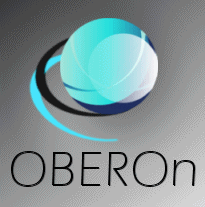|
The OBEROn kernel is a database which contains the instances of Object
classes created in a business context, the properties (fields) associated
with those objects, all the logical links with other objects, and
the processes that govern their lifecycles. Storage partitions,
called ObjectSpaces, are used to organize the data
within the database. Objects may have attached some documents stored
into distributed file systems (FileSpaces).

OBEROn operates on a single computer or in a networked
system environment implementing a
client-server architecture: provides database access through web
browsers, desktop and mobile applications.
The basic structure can be represented with 3 main
modules:
OBEROn Core
It's a direct interface with the database and the distributed file
systems; executes database operations by using standard query language
(SQL) queries and manages the file storage/retrieval operations
accessing the server local file system or remote file systems with
the FTP protocol.
It guarantees independence of the business application
from database and file systems.
The core module also includes:
- the XML processor to generate and parse XML data
- the SOAP processor to manage Web Service requests and for system
integrations
- the Mail processor to send external mail
- the SVN connector to synchronize the application schema with a
version control repository
- the TIKA module for file content indexing
- the workflow engine
- the SWT graphic toolkit to create chart images
This basic module requires the Java software Development Kit to
run and compile java classes.
OBEROn J-Interface
Defines java interfaces to access the core functionalities; it includes
the java OBEROn APIs for direct (SDK)
, remote (RMI) and Web Service / HTTP servlets access.
OBEROn OOQL (OBEROn Object
Query Language)
Translates OOQL commands into SDK java objects
and executes the relative core actions throw the J-Interface (API).

Users can access to the platform in three ways: via a
Web clients, Mobile clients (Android applications) or Desktop Java clients.
Desktop clients are stand-alone java applications;
the OBEROn platform includes the following default SWT administartion clients:
- Enterprise Context Design (Schema
Modeling Console)
used to perform administration activities related to the configuration
and maintenance of database object spaces and file system locations
and to define/modify the Business model (to model the object classes
used in a business application, along with their fields, process
rules, and users associated with those objects).
This module includes also an OOQL command line interface to help
the administrator to set up and test the OBEROn components quickly
and efficiently.
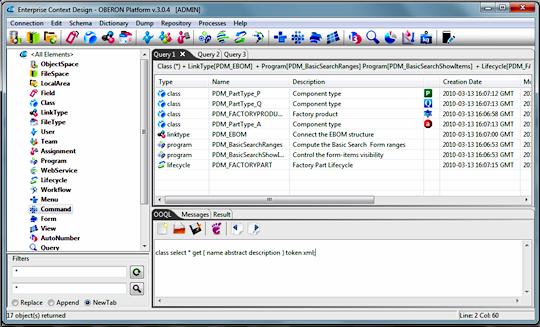
- Domain Object Manipulation
used to create/edit specific instances of the object classes defined
in the business model, to manage their lifecycle status, their connections
and attached files.
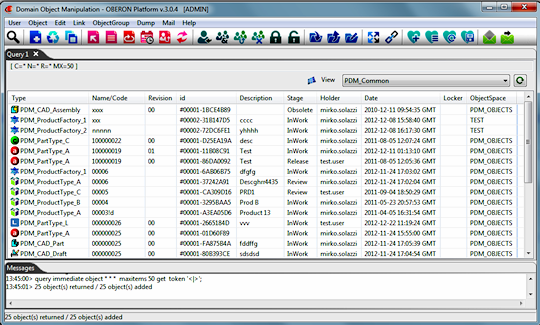
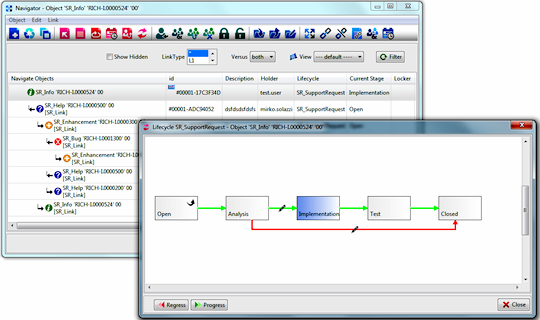
When access to the database is provided through web browsers
(Web clients) or moblie applications, a web or Application Server is required.
The application server includes servlets and web services used to
communicate with the OBEROn collaboration core and supports XML
and SOA integrations.
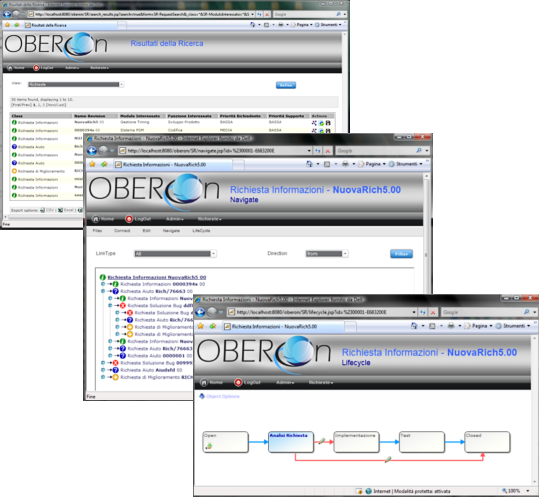

|

